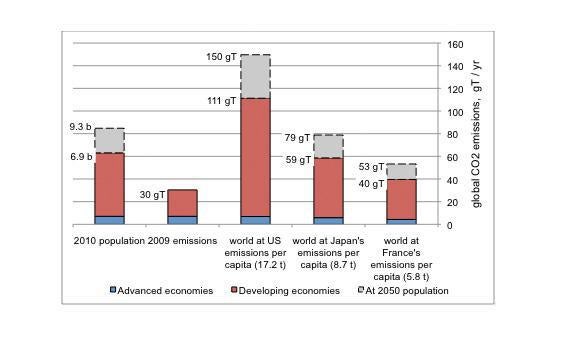Last week, Will Oremus posted on Future Tense about “The World’s Worst Ideas for Addressing Climate Change.” One idea included on the list was a form of geoengineering, described thusly: “Flood the atmosphere with sulfates, either via ‘stadium-size balloons tethered to oceangoing ships with 12-mile-long hoses’ or, more entertainingly, by ‘dispatching flotillas of Navy warships to fire particle-packed artillery shells into the sky.’ “ Below, Jeff Vanke of the New America Foundation (a partner with Slate and Arizona State University in Future Tense) argues that geoengineering isn’t so crazy after all.
Even if humanity halted greenhouse gas emissions tomorrow, we would already face a devastating three-foot rise in sea levels by 2100 or sooner. If today’s advanced economies slashed emissions in half (unlikely), and if developing countries skipped current high-pollution phases straight to higher efficiencies at higher production levels (unlikely), carbon emissions and the greenhouse effect would still grow and grow.

Source: United Nations.
Since 1850, global warming has caused sea levels to rise some 8 inches (21 centimeters), while the atmosphere’s CO2 levels have risen from some 250 parts per million to nearly 400 ppm. Methane and other gases matter, too, as do solar fluctuations, but it is the CO2 that stays intact and aloft much longer, about 2,000 years on average.
On current trends, by the year 2100, atmospheric CO2 will reach levels not seen in 34 million years—before our current ice caps formed, when sea levels were 200 feet (60 meters) higher than today. Temperature increases and glacial melting and rising sea levels will take much longer than a century to catch up with CO2 increases. But catch up they will if we do too little, if we focus narrowly on marginal gains in emissions reductions. The Kyoto process has been a two-decade waste of time, throwing mere buckets of water on a high-rise fire, when high-pressured hoses are the only hope. Yes, we need carbon reductions and zero-carbon energy solutions. But those will not stop the fire that already rages.
Will Oremus finds the prospects of geoengineering “terrifying” and supports “taking some more reasonable steps while we still have the chance.” That chance is long past. It is far too late to worry only about reducing carbon emissions. If we care about defending fertile, densely populated low-lying lands and cities, we must turn immediately to geoengineering as well. Whether through solar reflectivity, for example cloud seeding and amplification, or through permanent and stable carbon sequestration (solids, not gases), or through other means, we have to do something. Some geoengineering ideas are indeed terrifying, but others are not. Just like the accelerated Manhattan and Apollo Projects, we will necessarily risk billions in dead ends along the way, but the financial savings and the defense of our lands are well worth it.
In September 2010, Future Tense sponsored an event at the New America Foundation on geoengineering.
